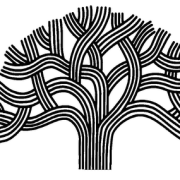Aristotle once wrote: “Man is by nature a social animal […] Anyone who either cannot lead the common life or is so self-sufficient as not to need to, and therefore does not partake of society, is either a beast or a god.” A new book by leading social psychologist and neuroscientist Matthew Lieberman, reviewed in an article in the Atlantic magazine, presents a modern version of the same argument. Drawing on a wide range of research studies in psychology and neuroscience, Lieberman makes the case that the human brain is literally wired for social interaction and belonging. It’s worth reading in full, but here are some exceptionally interesting excerpts:
One of the great mysteries of evolutionary science is how and why the human brain got to be so large. […] Scientists have debated this question for a long time, but the research of anthropologist Robin Dunbar is fairly conclusive on this point. Dunbar has found that the strongest predictor of a species’ brain size – specifically, the size of its neocortex, the outermost layer – is the size of its social group. We have big brains in order to socialize.
So it’s safe to say that the human brain did not evolve to be such a powerful and hyper-complex organ in order to just sit around alone and twiddle one’s thumbs. Ever since the dawn of time, the trend has been for humans to develop more and more complex social systems, and ever larger brains to go with them. The synergy that results from harmonious social relations is clearly an evolutionary advantage.
When economists put a price tag on our relationships, we get a concrete sense of just how valuable our social connections are – and how devastating it is when they are broken. If you volunteer at least once a week, the increase to your happiness is like moving from a yearly income of $20,000 to $75,000. If you have a friend that you see on most days, it’s like earning $100,000 more each year. Simply seeing your neighbors on a regular basis is said to increase your happiness “income” $60,000 a year more. On the other hand, when you break a critical social tie – here, in the case of getting divorced – it’s like suffering a $90,000 per year decrease in your income.
The exact figures here can be debated, but the broader point is still valid: our social connections generally make us happier. There has long been a great wealth of research linking social support to better outcomes, both physical and mental, but putting a monetary figure on the happiness produced by our relationships is a really striking way to demonstrate this dynamic.
To the brain, social pain feels a lot like physical pain – a broken heart can feel like a broken leg, as Lieberman puts it in his book. […] A broken leg and a broken heart seem like very different forms of pain. But there are evolutionary reasons why our brains process social pain the way they process physical pain. Pain is a sign that something is wrong. Social pain signals that we are all alone – that we are vulnerable – and need to either form new connections or rekindle old ones to protect ourselves against the many threats that are out there.
We put up psychological defenses and pretend we can be just fine on our own, but our very neurobiology compels us to seek and maintain the company of others. This research also shows that the mental pain of isolation, loneliness and depression, which affect so many seniors with mobility issues, is every bit as real and devastating as physical pain. The aging process is not a “threat” but it does come with many challenges, and intentional aging in community is a fun and intelligent way to manage those challenges with the companionship of others, just the way nature intended.



